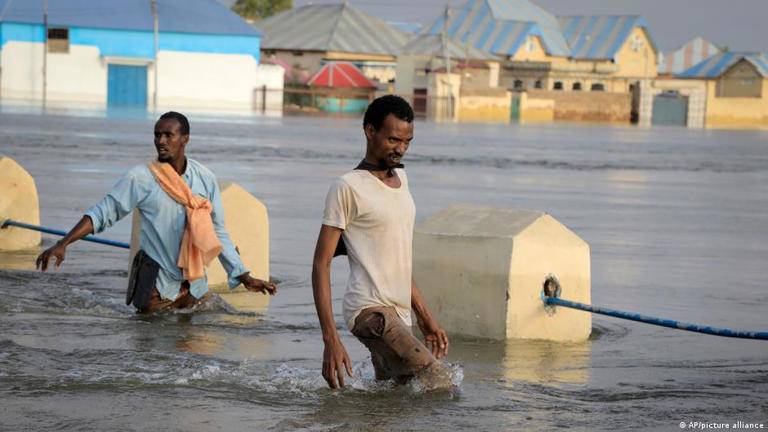Somalia, a country plagued by chronic instability and recurring natural disasters, is currently facing a severe humanitarian crisis as relentless floods have forced an estimated quarter of a million people to flee their homes. This catastrophic event has further exacerbated the already dire living conditions in one of the world's most vulnerable nations. This article examines the devastating impact of the floods, the challenges faced by the displaced population, and the urgent need for international assistance.
Causes and Scale of the Flooding:
Somalia is experiencing massive flooding, primarily due to heavy seasonal rains and overflowing rivers. The country's inadequate infrastructure and insufficient drainage systems exacerbate the situation, leaving communities vulnerable to the destructive force of floodwaters. The flooding has affected various regions, including Hiraan, Middle Shabelle, Lower Shabelle, and Gedo, displacing approximately 250,000 people.
Humanitarian Crisis and Displacement:
The floods have led to a significant humanitarian crisis, with families forced to abandon their homes and seek refuge in makeshift camps, or flee to higher ground. These internally displaced persons (IDPs) face numerous challenges, including limited access to clean water, sanitation facilities, and healthcare services. The lack of proper shelter exposes them to harsh weather conditions and heightens the risk of waterborne diseases.
Impact on Livelihoods and Food Security:
The floods have devastating consequences for Somalia's already fragile agricultural sector. Farmlands have been inundated, crops destroyed, and livestock lost, leading to substantial economic losses for farmers and exacerbating food insecurity. The disruption in food production further threatens the country's ability to feed its population, compounding the already dire situation of widespread malnutrition.
Health and sanitation concerns:
The displacement of such a large number of people poses significant health risks. Inadequate sanitation facilities in temporary shelters increase the likelihood of disease outbreaks, including cholera, diarrheal diseases, and respiratory infections. The lack of clean water exacerbates these risks, necessitating urgent interventions to prevent a further deterioration of the health situation.
International Response and Humanitarian Aid:
Addressing the humanitarian crisis in Somalia requires a robust international response. Humanitarian organizations, both local and international, are working tirelessly to provide emergency relief to the affected population. Immediate priorities include the provision of clean water, food assistance, healthcare services, and shelter. Furthermore, investing in long-term solutions, such as improved infrastructure and disaster preparedness measures, is crucial to building resilience within the country.
Conclusion:
The devastating floods in Somalia have forced nearly a quarter of a million people to flee their homes, exacerbating the already dire humanitarian situation in the country. Displaced individuals face numerous challenges, including limited access to basic necessities and increased health risks. Urgent international assistance is needed to address the immediate needs of the affected population and support long-term solutions that enhance Somalia's resilience to natural disasters. As the world rallies to provide aid and support, it is essential to remember the significance of sustained efforts in building a more secure and resilient Somalia for the future.


